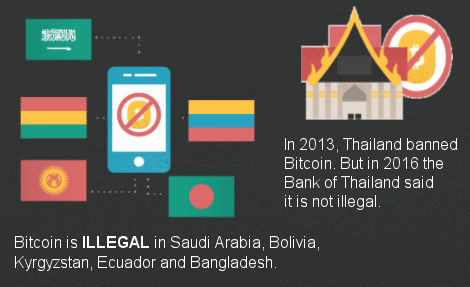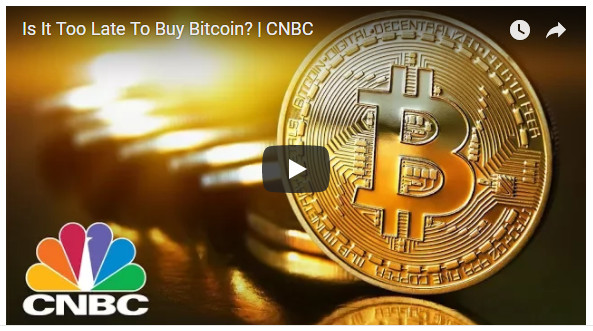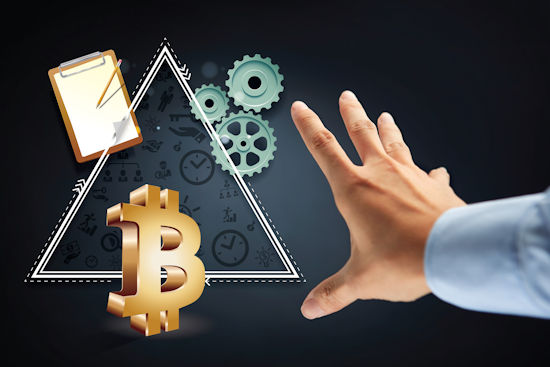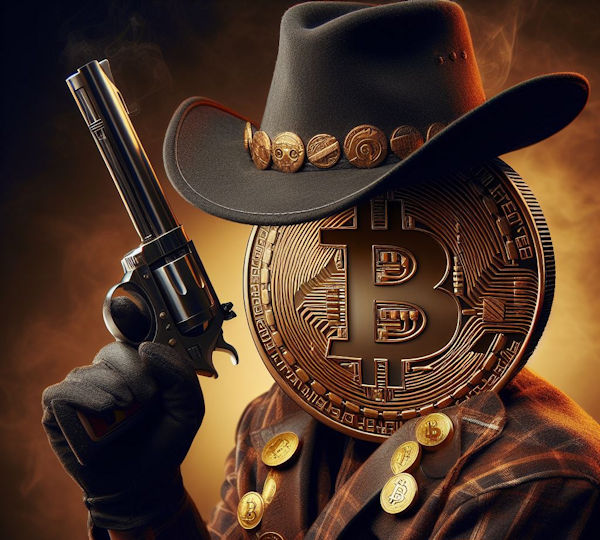
We are seeing much the same thing today in the Crypto arena. Over the last decade since the creation of the first crypto, i.e., Bitcoin, we’ve seen a literal hundred thousand “Crypto Millionaires” minted. But there have probably been just as many people who have lost 90% of their investment, simply through buying at the top in a frenzy and selling at the bottom of the cycle in a panic, since crypto is so volatile.
In addition to just the normal trading losses experienced by novice investors the Crypto universe has experienced its share of “Crypto Outlaws”. You might say the “Jessie James of Crypto” is Sam Bankman-Fried (aka. SBF), founder of the FTX cryptocurrency exchange. He was convicted of seven criminal charges including wire fraud, commodities fraud, securities fraud, money laundering, and campaign finance law violations.
The fact that a “Lawman” arrived on the scene and SBF was sentenced to 25 years in prison and ordered to forfeit $11 billion may indicate that the end of the Wild West era of Crypto is approaching. But there are still some shady dealings going on.
Beware of Crypto Shady Dealings
Bloomberg recently published an article on one of the darker sides of Crypto that although legal… seems sketchy. The article titled, “Bitcoin ATMs Flood Black, Latino Areas, Charging Fees up to 22%” highlights companies like Bitcoin Depot, and Coinflip that charge outrageous fees to buy Crypto using their Bitcoin teller machines, or “BTMs”. These kiosks are often located at gas stations, liquor or convenience stores, and other places where you might find a traditional ATM. The article highlights the fact that they are predominately located in poorer neighborhoods and may be used by illegal immigrants to transfer money to their families abroad. The uneducated may also use them as a “lottery ticket” bet on crypto. But with the high fees, your odds of profiting are drastically reduced.
Trying Out a Coinflip BTM
I recently tried out one of the Coinflip machines to see for myself how they worked. I was planning on investing $5 as a test case. After entering my personal information and inserting my $5, the next thing that happened was that the machine spit my money out and the screen said, “Sorry, this machine only accepts $50 and $100 bills. What? OK, I’ll reluctantly try $50. The next was a warning, once you insert cash you can’t reverse the transaction. Okay, that is a common feature of Bitcoin transactions, Next… Choose the currency you want to buy.
Since I wanted to be able to see the exchange rate I was getting easily, I chose a “Stablecoin” called USDC which has a fixed value of $1.00 per coin. And for my $50, Coinflip was going to give me $38 and change in USDC (or a little less than a 24% bite). But wait, I have a discount code for being a first-time user, so I entered the code and now I’m getting $41.27 for my $50. So, with the discount, the machine is charging me $8.73 to convert my cash into stablecoins (or “only” 17.46%). This charge would be much less obvious if I were purchasing 0.00077156 Bitcoin. So, perhaps most users of the machine don’t even realize how bad a deal they are getting.
Ok, I know this is a bad deal, but at this point, I’m committed and I still want to see the whole process. So, I scan the QR code from a new Crypto wallet I created called “UniSwap” and after a couple of tense minutes, my $41.27 magically appears in my UniSwap wallet on my phone. And then the next scam begins.
UniSwap Scam?
When I try to transfer my USDC out of my Uniswap wallet, I find I only have $40.42 USDC. and it says I have insufficient funds to cover the network fee. Even if I try to only transfer $1.00 USDC out of my wallet I still have insufficient funds. The problem is that UniSwap runs on ETH. You need to have some ETH in order to do anything.
According to Market Place Fairness the “gas price” i.e. the exchange fee for transferring USDC varies depending on the network used. They say, “For example, the Crypto.com exchange charges a 10 USDC fee on the ERC-20, but this fee goes down to 0.8 if you’re on the BEP-20 blockchain… Based on our research, you might have to pay anywhere between 0.29 and 25 USDC for each transaction. The average cost for USDC transactions comes out to around 3.67 USDC. ” so my $41.27 should have enough to cover it, but according to UniSwap you can’t use USDC to pay the fee.
By transferring enough ETH into UniSwap to cover the fees I was able to eliminate the error message, but I was still getting a terrible “gas price” of $8-$10. So I logged in with my browser and linked that to my phone app. Doing that gave me a free transaction without any fee and so I was able to convert my USDC to ETH. So, as with any new technology, there is a learning curve.
UniSwap is actually one of the big players in the Crypto space just be wary of the exchange fees.
There is More to Crypto Than Bitcoin
So, there are lots of ways to lose money in Crypto. On the opportunity side, PayPal provides a very simple interface to buy a few Cryptos like Bitcoin and Ethereum. Another one of the more reputable exchanges is Coinbase.com. It has two “sides” a Basic interface (much like PayPal) and an advanced interface. The basic interface has higher fees but is very simple to use but offers many more coins available than PayPal. The advanced side looks like a typical stock trading terminal.
Coinbase Advanced Terminal
In the Advanced terminal (above), you can see a chart of your chosen crypto, change the timeframe from 1 minute, 5 minutes, 15 minutes, 30 minutes, 1,2, or 6 hrs, or choose 1 day. You can see a list of all the open market orders both buy and sell (the spread between them and their relative size), the market trade history, and the current price of the coin you are looking at. To the far right, you can see how much purchasing power you have. Below that you can enter Limit, Market, and Stop Limit orders.
In the lower left, you can see your Open and Filled orders. If you look closely you can see a sample order I placed. It was a “Market Order” to Buy ALGO (purchased with USD). It filled at $0.1688, which got me 119.0 ALGO for a total cost of $20.20. The fee (or commission) on this trade was a whopping $0.1105, (i.e., 11 cents). The advantage of crypto is you can do small trades for small fees, unlike the stock market where the commissions would eat you alive. Cryptos trade for anywhere from amazingly tiny fractions of a cent, to Bitcoin’s $64,000-$70,000 per coin (but you can buy an infinitesimally small fraction of a coin).
Cryptos are No Longer Just Alt-Currencies
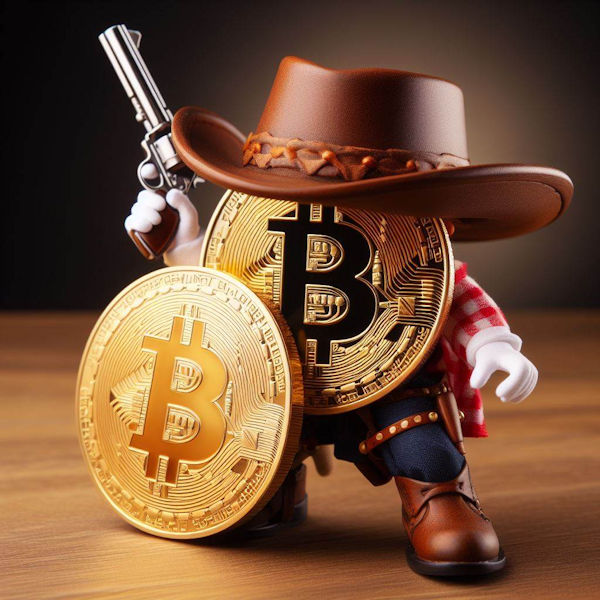
Other Cryptos can do other things, some do identity verification, peer-to-peer exchanges, or even interface with the real world, i.e., the Internet of Things (IoT). Some help with Supply Chain Management, and some create “collectibles” or worthless game tokens plus much, much, more.
Cathie Wood, founder of Ark Investment Management, specializes in “disruptive” exchange-traded funds (i.e., ETFs). She is saying that until the recent advent of cryptos things like biotech, and A.I., were “not-ready-for-primetime”. But now robotics, energy storage, artificial intelligence, blockchain technology, and multi-omics sequencing are finally ready for primetime. This is creating a synergistic effect that will revolutionize the world, over the very near future, in ways we can’t even imagine now.
You might also like:
- Crypto 2.0, A Whole New Ballgame
- Non-Fungible Tokens (NFTs): Another Financial “Fumble”
- Can Ruthless Governments Make Crypto Worthless?
- How Blockchain’s Unique Innovations Can Prevent Money Remittance Scams
- What are NFTs and Why are They Going Crazy?
- Blockchain Goes to Ethiopia
- Ripple the Cryptocurrency of Banks
- Can Crypto Solve Venezuela’s Hyperinflation Problem?
- How High Inflation Drives Countries Towards Crypto
- Cryptocurrencies and Inflation
Image generated by Bing A.I. on 4/19/2024.


